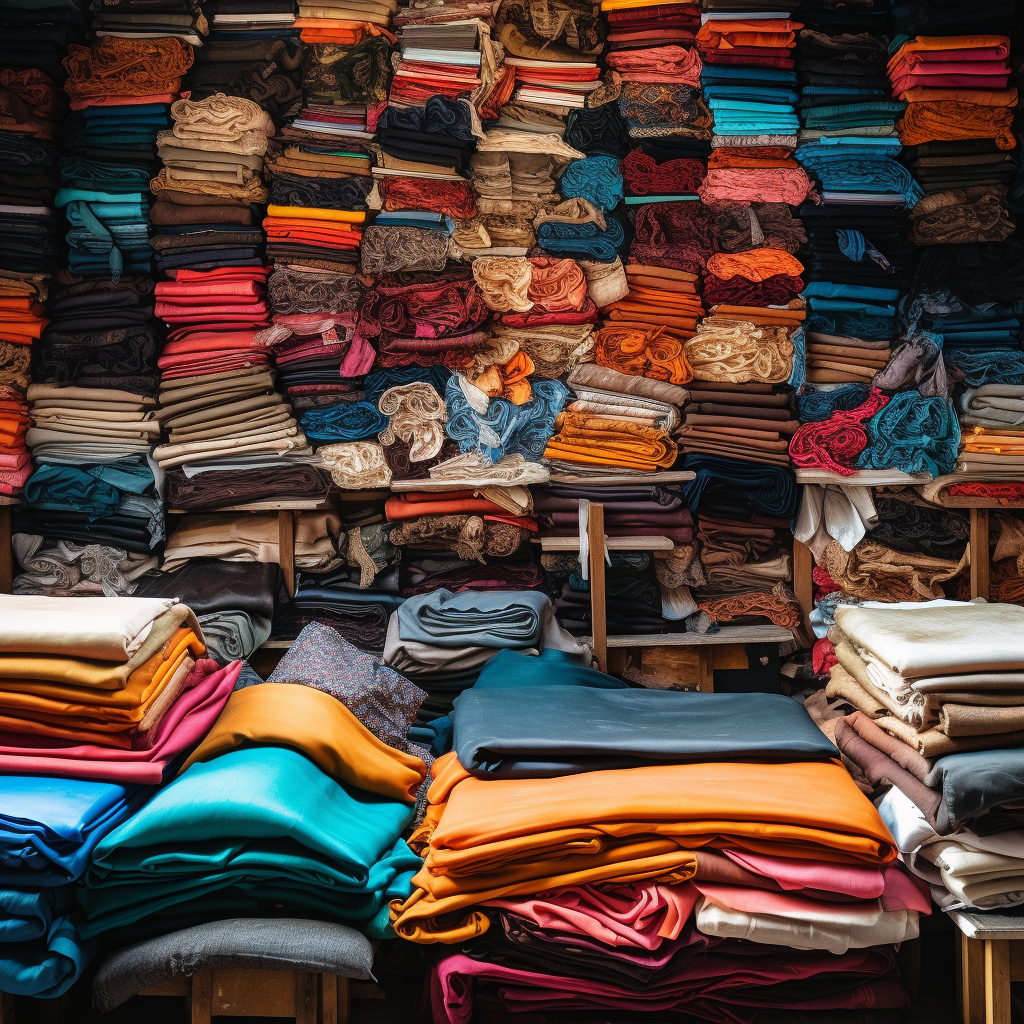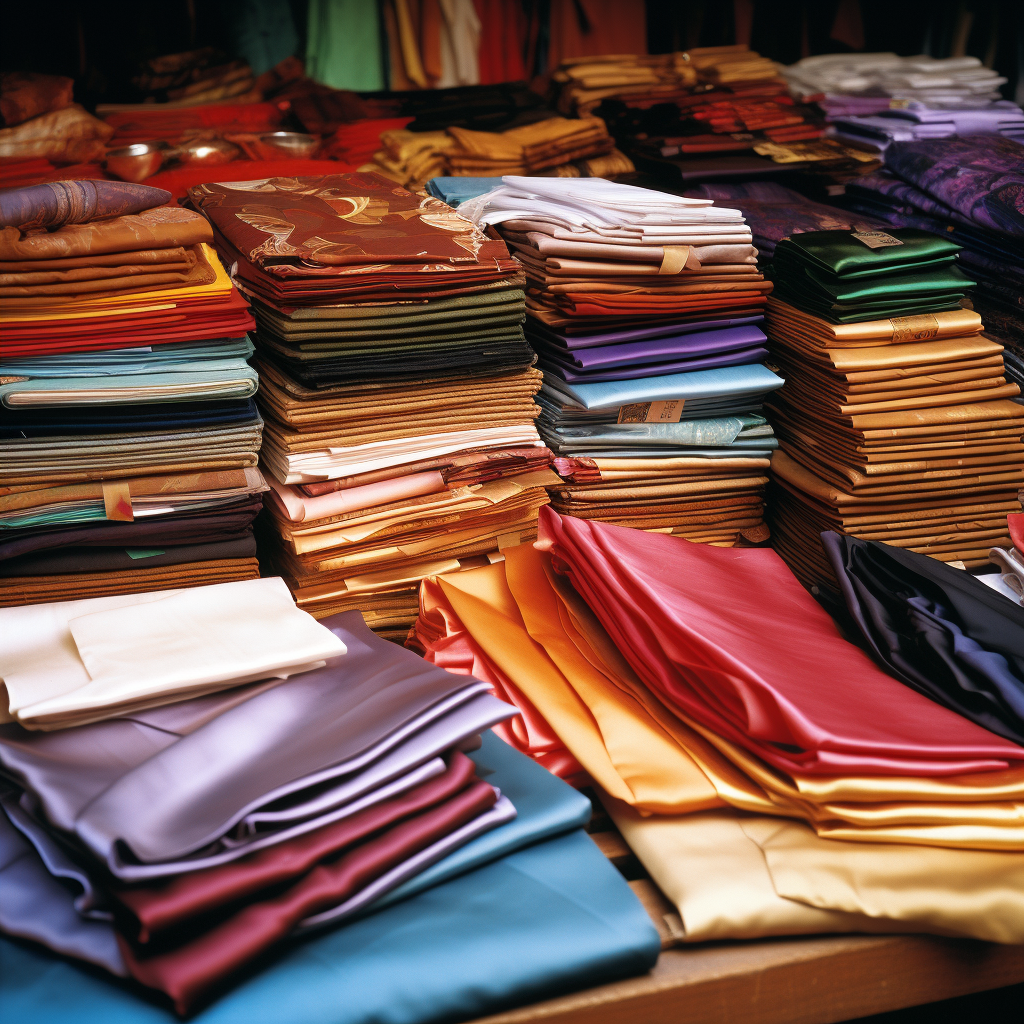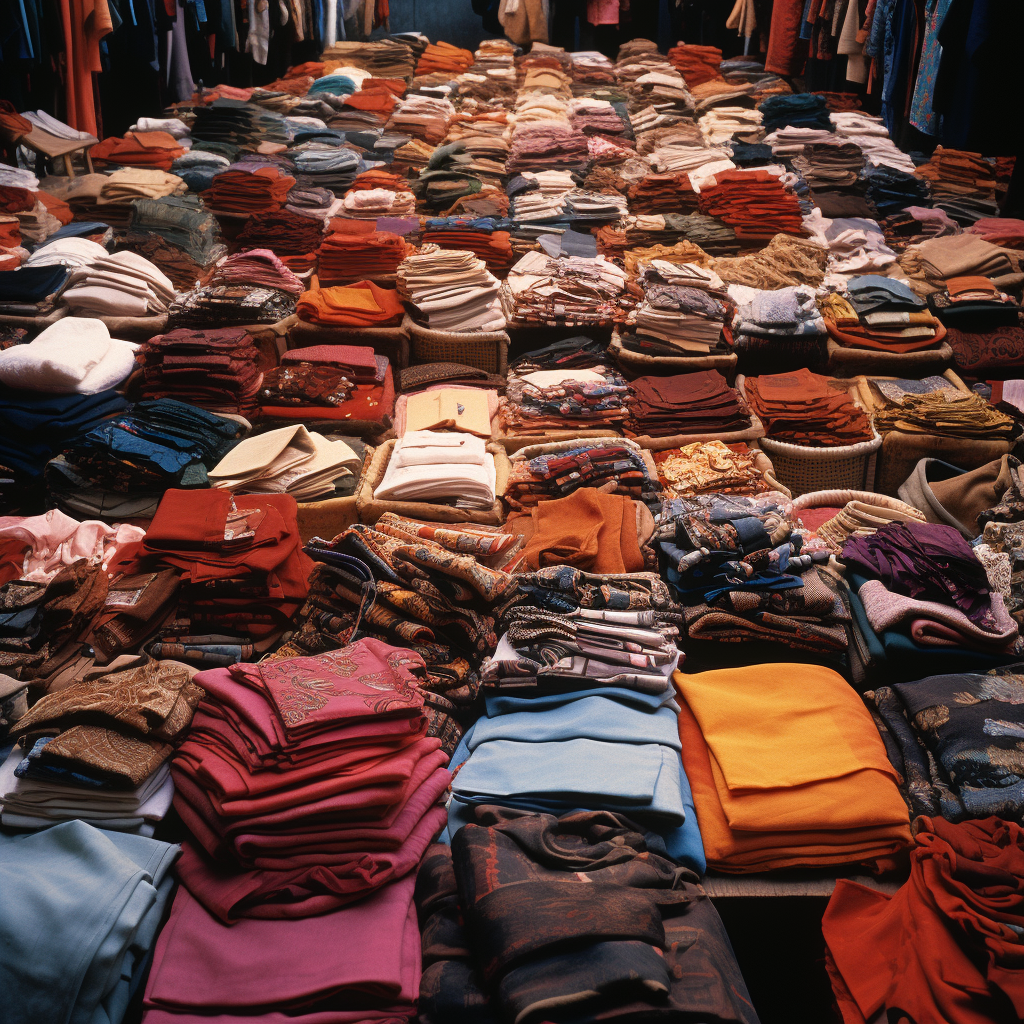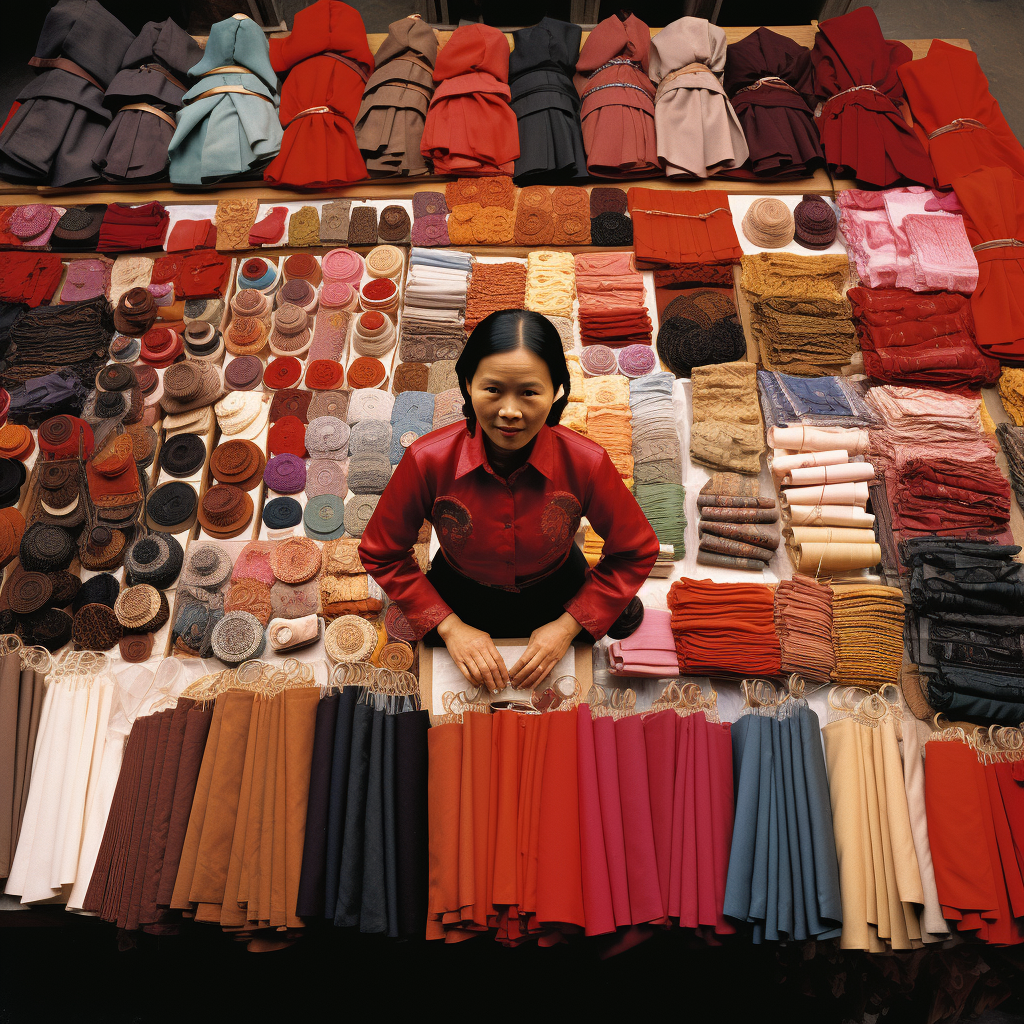The fashion industry is an ever-evolving arena, keen on innovation and deeply influenced by global sourcing strategies. One country that has consistently been a magnet for sourcing high-quality, cost-effective materials for clothing is China. However, venturing into the world of sourcing materials in a foreign country comes with its unique set of challenges. Understanding local market dynamics, assessing quality, and navigating regulatory landscapes are essential steps. This comprehensive guide aims to demystify the process, offering tips on how to source materials for your fashion brand successfully from China. Each chapter that follows will delve into these subjects, offering you a roadmap to informed decision-making.
The Landscape of Textile Manufacturing in China
Types of Materials Available
China is a powerhouse in textile manufacturing, offering an extensive array of materials to choose from. Cotton, silk, wool, and synthetics like polyester are commonly produced. High-tech performance materials such as water-resistant and breathable fabrics are also available, giving fashion designers ample opportunity to be creative.
Production Hubs and Regions
The geographic diversity of China contributes to its segmented manufacturing capabilities. While the Jiangsu and Zhejiang provinces are known for silk and wool production, Guangdong province specializes in cotton and high-tech synthetics. Familiarizing yourself with these regions can streamline your sourcing process and may help you pinpoint exactly what you’re looking for.

Key Considerations When Sourcing from China
Quality Assurance
When it comes to sourcing materials, quality should be your top priority. A well-made garment begins with superior materials. ISO certification and quality inspection reports are key markers of a supplier’s commitment to quality. Don’t hesitate to ask for these documents during your initial interactions.
Environmental Impact
Today, sustainability is not just a buzzword; it’s a necessity. China has been ramping up its sustainable manufacturing practices, but it’s crucial to ensure that your chosen supplier adheres to eco-friendly processes. Look for certifications such as OEKO-TEX or the Global Organic Textile Standard (GOTS) as indicators of a company’s sustainability initiatives.
Cost
While cost-effectiveness is one of the advantages of sourcing from China, it shouldn’t come at the expense of quality or ethical practices. Always factor in shipping costs, tariffs, and possible quality control issues when calculating the total expense.
Intellectual Property Concerns
China has made strides in intellectual property protection, but it’s still advisable to register your designs and trademarks both domestically and in China. Utilize non-disclosure agreements when discussing designs and other confidential information with potential suppliers.
Identifying Reliable Suppliers
Trade Shows and Exhibitions
Trade shows offer a unique opportunity to meet suppliers face-to-face. Events like the Canton Fair or Intertextile Shanghai Apparel Fabrics can provide invaluable insights into the industry, enabling you to vet potential suppliers and even view samples in real-time.
Online Portals
Websites like Alibaba and Global Sources can serve as a starting point in your search for suppliers. However, it’s essential to conduct thorough due diligence to validate their credentials. Look for suppliers with several years of experience and a portfolio that aligns with your brand’s needs.
Industry References and Reviews
Always ask for and verify references. Reputable suppliers should have a list of clients who can vouch for their quality and reliability. Peer reviews can provide an additional layer of assurance.
The Importance of Sampling
Sampling is a critical phase in the sourcing process, often serving as a litmus test for the overall quality and suitability of materials. Overlooking this step can lead to costly mistakes, including misalignment with your brand’s quality standards, unexpected production issues, or even regulatory non-compliance. Here are key points to consider when it comes to sampling:
Evaluate Material Quality
It’s imperative to physically touch and feel the fabric samples. Look for uniformity in color, texture, and weight. These factors are pivotal in determining the material’s suitability for your specific clothing line. Ensure you test multiple samples to account for potential batch variability.
Conduct Performance Tests
Performance tests like durability, colorfastness, and tensile strength offer quantitative data about the material. If your clothing line has particular requirements, such as water resistance or UV protection, now is the time to test for these features.
Assess Aesthetic Appeal
Beyond its technical attributes, the material should also align with the aesthetic vision of your brand. Pay attention to the look and feel, and how it drapes or fits into the style of the clothing you plan to produce.
Understand Cost Implications
While some suppliers offer samples for free, others might charge a nominal fee. Even if it comes at a cost, this step is an investment in quality assurance. Often, the cost of the sample is deductible from your first bulk order, offering a financial incentive to proceed with the supplier should their materials meet your standards.
Verify Regulatory Compliance
Last but not least, ensure the material samples are compliant with all relevant safety and environmental regulations in both China and your target market. Look for certifications and request comprehensive testing reports as a safeguard against future complications.

Navigating Regulatory Requirements
The task of sourcing materials for clothing from China isn’t solely about finding the right supplier and ensuring quality; it also involves adhering to a host of regulatory requirements. Compliance isn’t just about avoiding fines or legal hassles—it’s about building a responsible brand. Here’s how to navigate this complex landscape:
Export and Import Laws
When sourcing materials internationally, understanding export and import laws is vital. In China, it’s essential to know the Harmonized System (HS) codes related to the materials you’re importing. These codes are an international standard for calculating import duties and taxes. Moreover, you’ll need to be aware of any trade agreements between your home country and China that might affect tariff rates or import restrictions.
Testing and Certification
The materials you source must meet quality and safety standards in both China and your target market. In the United States, compliance with the Consumer Product Safety Improvement Act (CPSIA) is mandatory for clothing. European businesses should adhere to the Registration, Evaluation, Authorisation, and Restriction of Chemicals (REACH) regulations. Ensure that your supplier can provide certificates from accredited labs to confirm that their materials meet these standards.
Ethical and Environmental Regulations
In today’s socially conscious market, consumers demand ethical and sustainable products. Ensure that the materials you source comply with environmental regulations like OEKO-TEX or the Global Organic Textile Standard (GOTS). Some consumers may also be concerned about labor conditions, making it crucial to verify that your suppliers are compliant with fair labor practices.
Local Regulations and Standards
Never underestimate the power of local rules, which can sometimes be more stringent than national or international ones. Always check if there are any additional requirements or certifications needed for selling in specific regions within your target market.

Building a Long-Term Relationship with Suppliers
Establishing a long-term relationship with a supplier isn’t just about streamlining your supply chain; it’s about building a partnership that can adapt and grow with your brand. Here’s how to cultivate this crucial business relationship:
Open and Transparent Communication
Good communication is the foundation of any successful business relationship. From the outset, make your expectations clear regarding quality, delivery timelines, and other critical aspects. Choose a supplier who is responsive and willing to discuss problems openly. Invest in translators if needed, to avoid any misunderstandings due to language barriers.
Regular Quality Checks
Maintaining high standards is easier when you’re continuously evaluating quality. Periodic visits to the supplier’s factory, both announced and unannounced, can be a potent method of ensuring consistent quality. You can also opt for third-party inspections to add another layer of accountability.
Ethical Alignment
Ensure that your business ethics and practices align with those of your supplier. A supplier who shares your commitment to sustainability, fair labor practices, and community engagement is more likely to be a reliable, long-term partner.
Financial Stability
A supplier’s financial stability is often overlooked but is crucial for a long-term partnership. Request audited financials or other proof of financial health, particularly if you’re considering entering into a long-term contract.
Flexibility and Adaptability
Markets change, and your business will evolve. A supplier who is flexible in adjusting to new requirements or market conditions can be an invaluable asset. Look for suppliers who are innovative and willing to work with you to meet new challenges.
Common Pitfalls and How to Avoid Them
Even with the best of intentions, sourcing materials for clothing from China can come with a host of challenges. Being aware of common pitfalls can help you navigate the sourcing process more smoothly. Here’s what to watch out for:
Inadequate Research
Skipping the initial research phase can lead to poor choices, both in terms of material quality and supplier reliability. Always conduct market research, understand industry benchmarks for pricing, and read reviews and testimonials before selecting a supplier.
Ignoring Small Print
Contracts and agreements often contain clauses that could lock you into unfavorable terms. Always read the fine print and consult with a legal advisor familiar with international trade laws to safeguard your interests.
Failing to Validate Claims
Suppliers may make a wide range of claims, from material quality to ethical standards. Always validate these claims by requesting certifications, conducting site visits, or seeking third-party audits. Trust, but verify.
Overlooking Logistics
Shipping costs, custom duties, and storage fees can add up quickly and need to be factored into the total cost. Be sure to understand the full logistical chain, from the factory to your warehouse, to avoid unexpected expenses.
Not Planning for Delays
In international sourcing, delays are almost inevitable due to various factors like customs clearance, shipping issues, or even political instability. Build a buffer into your timelines to account for such contingencies.
